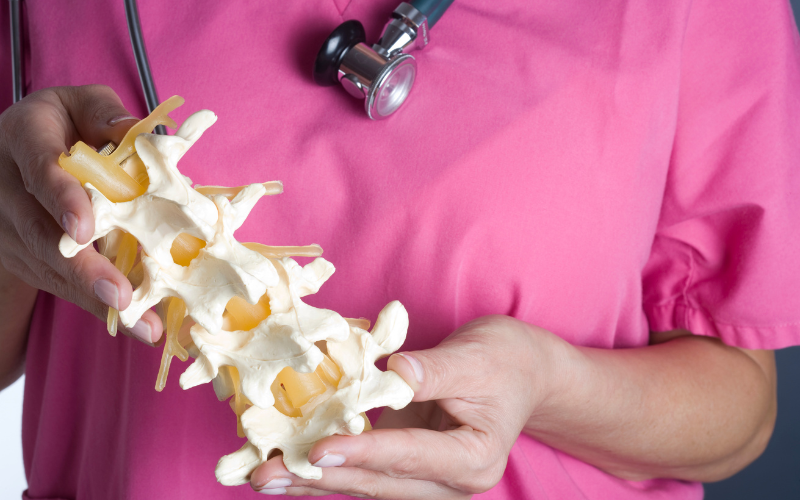According to the National Spinal Cord Injury Statistical Center (NSCISC), approximately 450,000 Americans currently live with the consequences of a spinal cord injury or SCI. Estimates also showed that every year, around 17,000 individuals sustain a spinal cord injury due to motor vehicle accidents and fall accidents.
Spinal cord injuries may not be as common as other medical conditions, but people should actively advocate for its prevention since this kind of injury can cause a range of permanent impairments.
Furthermore, such an injury can cause irreversible damage to the neurons, thus affecting one’s physical and cognitive abilities. But there’s still hope for recovery and functional restoration if the right treatment options are followed.
A spinal cord injury is a medical condition referring to damages sustained by the bundle of nerves, cells, and tissues that make up the spine. When injured, the spinal cord ceases to transmit and receive signals to and from the brain, thus impairing normal body functions.
Most spinal cord injuries happen as a result of direct injury to the tissues or vertebrae that surround it. This may be caused by vehicular accidents, falls, acts of violence, sports-related injuries, and degenerative diseases.
Furthermore, spinal cord injuries can cause direct impairments in both physical and cognitive function, which may be permanent or temporary. Once the neurons are damaged, it can alter one’s thinking, stimulus-response, sensation, movement, strength, and other bodily functions.
Spinal cord injuries may be classified into different types and levels depending on the severity of damage and the location of the injury.
A spinal cord injury may be divided into two types based on its effects on the body. It may either be an incomplete or complete spinal cord injury.
an incomplete injury means that only a part of the spinal cord is damaged, thus allowing the unaffected area to still convey messages to and from the brain. Patients with such an injury still retain their sensation (feeling) and motor skills or muscle movement and control.
a complete injury means that the entire spinal cord is damaged and has lost the ability to transmit signals and messages to and from the brain. This type of injury completely impairs the sensory and motor skills, thus causing paralysis. It can either be quadriplegia or paraplegia.
Another way to classify spinal cord injuries is through the specific location of the injury. The damaged section of the spine can indicate what nerves are affected, thus determining the affected body part.
Damages to the spinal cord can happen by directly injuring the spine, such as splitting the cord or fracturing the bones. It may also occur through secondary damage or as a result of an inflammation or degenerative disorder.
Regardless, both injuries will only result in a number of debilitating symptoms, which may be temporary or permanent. Some examples of the effects of a spinal cord injury include the following:
These symptoms can differ in their presentation, duration, and severity depending on the type and level of spinal cord injury.
Unfortunately, science has yet to develop a cure for all spinal cord injuries. However, patients can often improve their condition if the proper treatment techniques are followed.
As the swelling goes down through regular treatment, patients can gradually regain some bodily and systemic functions. Rehabilitation may also help in continually restoring t body functions as late as 18 months after the spinal injury.
However, damaged neurons in the central nervous system and some physiologic impairment in the spinal cord are often permanent. So, recovery is possible for some functions but not all of them.
Patients sustaining spinal cord injuries due to traumatic causes require immediate treatment services, such as surgery. This is needed to improve the blood flow in the affected area and preserve nerve cells and nerve function.
Once the patient is stable, your physician will come up with a treatment plan, which usually includes rehabilitation.
Rehabilitative programs will help build and maintain body strength, as well as preserve unaffected bodily functions. More importantly, rehabilitation will aid in stimulating neural pathways, thus allowing neuroplasticity and neuroprotection.
Additionally, these therapeutic programs will help patients develop maximum independence, which can significantly improve their quality of life. Some examples of rehabilitative programs include physical therapy, occupational therapy, speech-language therapy, counseling, and emotional support.

As a leading spinal cord injury rehabilitation provider, NeuLife brings the highest quality of medical care and treatment services to each patient in the facility. Our board-certified team of clinicians works together to create an individualized treatment plan tailored to each patient's specific needs.
We also provide other treatment programs, such as neuro rehabilitation and brain injury rehabilitation and more. Contact us now at 800-626-3876 to learn more!
The material contained on this site is for informational purposes only and DOES NOT CONSTITUTE THE PROVIDING OF MEDICAL ADVICE, and is not intended to be a substitute for independent professional medical judgment, advice, diagnosis, or treatment. Always seek the advice of your physician or other qualified healthcare providers with any questions or concerns you may have regarding your health.

We know that choosing the next step in your recovery from a catastrophic illness or injury is complex. Together, we can help you take the next step.
Contact us with any questions today.